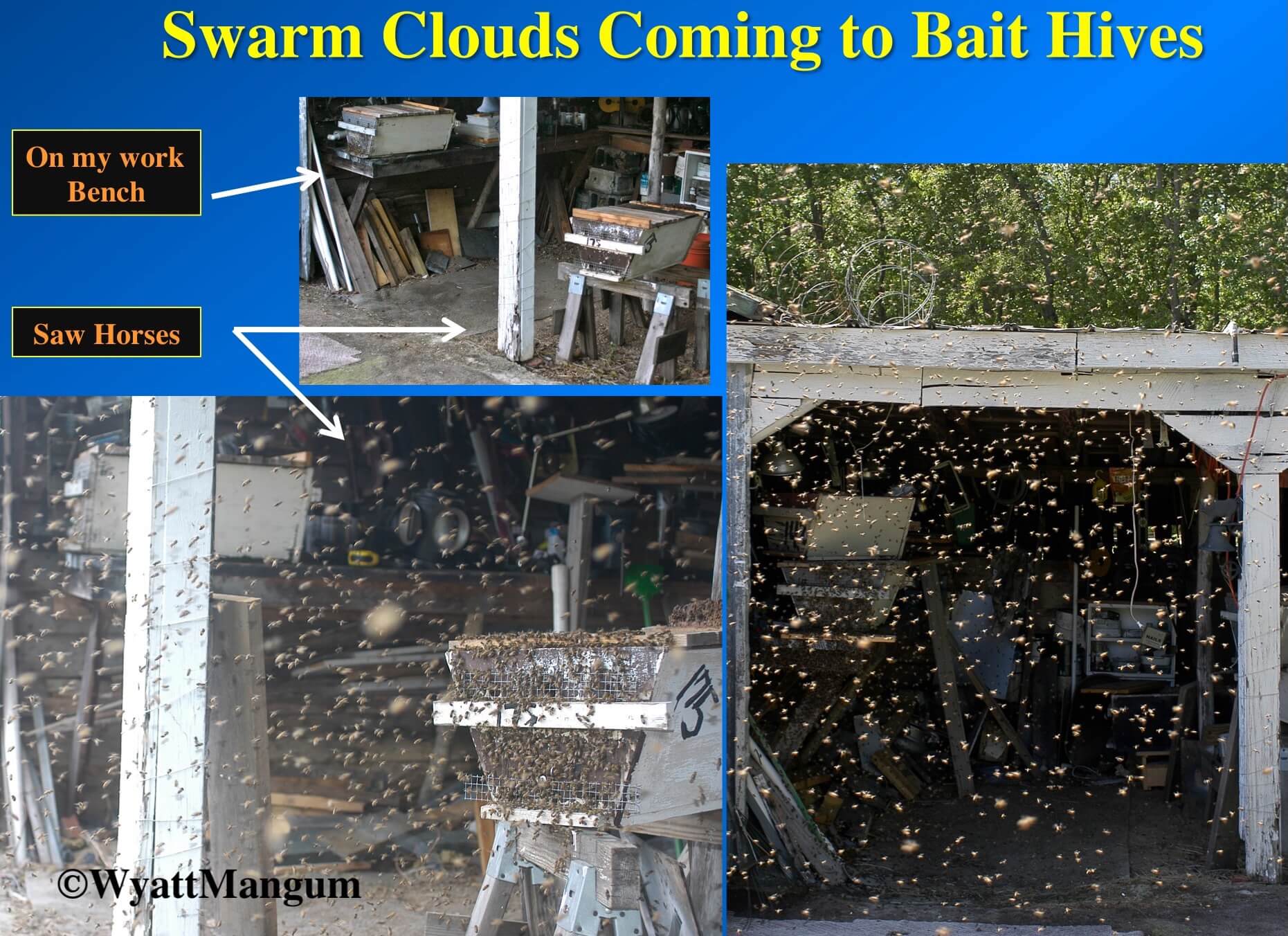
As we know, bees and queens are becoming terribly expensive. In the spring, even after all the bee management to the contrary, a $150 swarm (the cost of a 3-pound package) could just fly away. Another disappointing loss is when a swarm leaves for the woods, taking a $30 queen with them. The sudden expensive loss is becoming difficult to live with. I have been working on the last tactic a beekeeper could have to retrieve that swarm.
Although they are not successful every time, I have bait hives at certain sites that are incredibly attractive to scout bees. For example, when I see a big swarm near the end of a branch, some 60 feet up in a pine tree, it does not bother me like it used to, not if dozens of scout bees have appeared at my prime bait-hive catching site, which is only four feet off the ground with a little roof over the bait hive, configured similarly to those in Figure 1.
In recent years, I have been specializing (customizing) my bait-hive configurations to make them even more attractive at retrieving swarms from specific fixed (permanent) apiary locations, which consist of the bait-hive contents and the close-by features of the site.
My interest in swarms finding nest sites began in high school when I was building up my 100 frame-hive operation. I found a very influential book, “Communication Among Social Bees,” by Lindauer (1971) as part of my constant bee-book hunting, both technical and historical. After school I worked at a veterinary hospital. In the slow spells when my work was caught up, out came Lindauer’s book. I studied his book standing up by cages of barking dogs.
I always include comb in my bait hives (see Figure 2). If possible, I incorporate a partial shelter from a building along with the proper sun exposure (morning sun and afternoon shade). The bait-hive site needs some separation from the apiary because the swarm prefers to move away from its parent colony, as least 984 ft or 300 m (Seeley and Morse, 1978). Moving about 1000 ft from an apiary is usually problematic because that could require permission from another property owner (but see my results below). A bait-hive site by a building apparently helps the location be more obvious (both visually and by scent), assisting scout bees to find the site early in their canvassing of the area. This article briefly reviews various aspects of bait-hive use, particularly for using combs in the hives. Then I describe bait-hive acceptance by scout bees with different amounts of comb and without close-by influences due to the sites. (I am going to vary an internal hive condition (comb) while not having any site influences, or holding them to a “constant” of zero.) …


